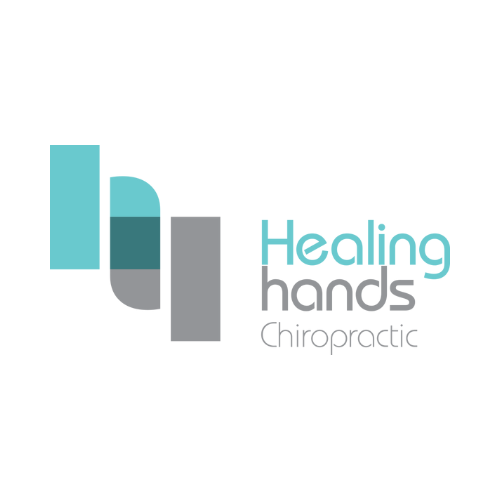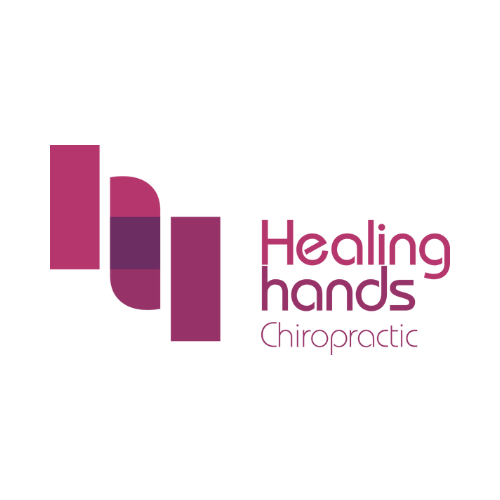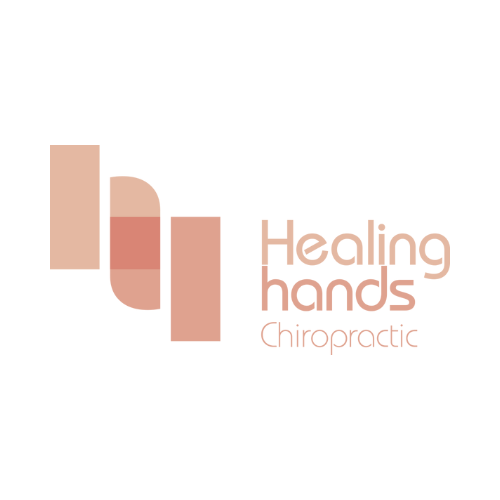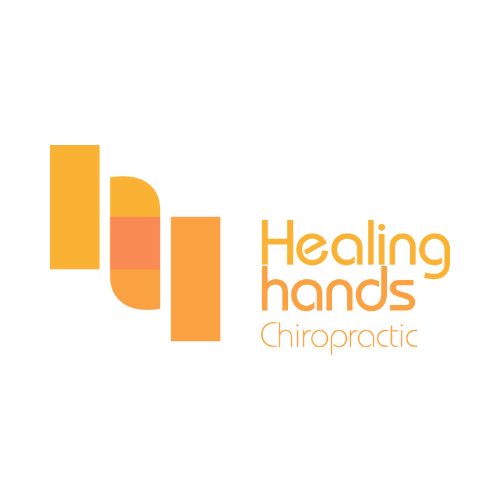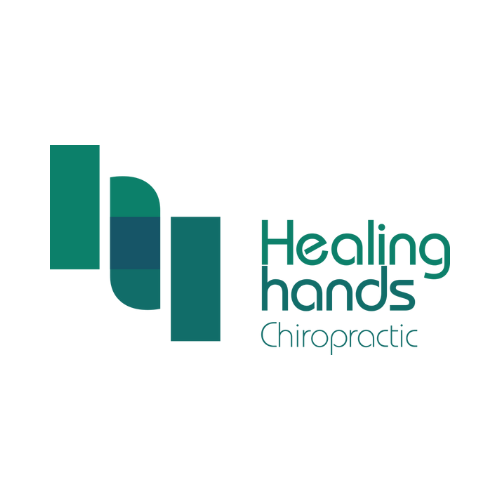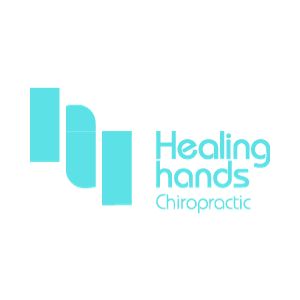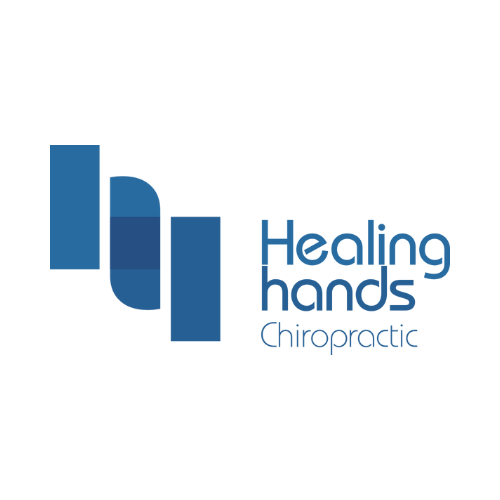Knee Pain Treatment
What is knee pain?
Knee pain is a common musculoskeletal problem that affects people of all ages and genders. A myriad of reasons can cause people to suffer from knee pains. The reasons can be due to mechanical issues, injuries, and arthritis.
The knee joint is vulnerable in many ways (e.g. age, obesity, family history, knee injury and overuse), which could cause knee pain over time. However, there are many ways to treat knee pain: chiropractic treatment for knee pain and chiropractic adjustment for the knee. Our certified chiropractors will be able to advise you on the exercises and stretches you can do to reduce pain in the knee areas after your knee alignment and treatments.
At Healing Hands Chiropractic, our primary goal is to get to the root of the issue and handle your knee pain with precise non-invasive techniques that help relieve pain altogether. We aim to restore our patients’ physical capabilities to how they were before, enabling them to have a better quality of life through our chiropractic treatment for knee pain. Our chiropractors can also advise you on the best solutions for your knee injury and pain relief.
Knee Pain Facts!
- According to a study by Edelman Intelligence, Singaporeans spend about $8 billion each year on pain relief treatment.
- An article by Singapore General Hospital also stated that pain dramatically influences a person and affects their moods. Furthermore, it can affect sleep habits and even the quality of sleep, which can get a person on a bad start to their day.
- According to Health Hub Singapore, about 80 percent of adults suffer from lower back pain from time to time.
What are the symptoms of knee pain?
Knee pain is a prevalent ailment that affects people of all ages and activity levels. This discomfort, which can range from mild twinges to debilitating pain, can stem from a myriad of factors, including injuries, medical conditions, or simply the wear and tear of daily activities. Given the complexity of the knee joint and the variety of potential causes, the symptoms of knee pain can manifest in diverse ways. Here are some common symptoms associated with knee pain:
Pain: This can be sharp, dull, burning, or throbbing. The pain might be constant or might only occur when you move your knee in a certain way.
Swelling: Fluid can accumulate in or around the knee joint, leading to visible swelling.
Stiffness: A feeling that the movement of the knee is restricted.
Redness and warmth: The skin around the knee may become red and feel warm to the touch, often indicating inflammation or infection.
Weakness or instability: You might feel as though your knee might give out when you stand or walk.
Popping or crunching noises: These sounds, known as crepitus, might be heard when the knee moves.
Inability to fully straighten the knee: This can be due to pain, swelling, or mechanical blockage in the joint.
Decreased range of motion: Difficulty bending or straightening the knee.
Locking: The knee may get stuck in one position, usually due to a mechanical problem like a loose body in the joint.
Visible deformity: The knee might look out of shape or misaligned, often seen after significant injuries like fractures or ligament ruptures.
The specific symptoms can provide clues about the underlying cause of knee pain. For instance, sudden pain and swelling after a twisting motion might suggest a torn meniscus, while gradual onset of pain and swelling could indicate arthritis. If someone experiences severe knee pain, sudden swelling, an inability to bear weight on the knee, an obvious deformity, or any other concerning symptoms, they should seek medical attention promptly.
What are the complications from knee pain?
If left untreated or inadequately managed, knee pain can lead to various complications. These complications can further compromise the knee’s function, limit mobility, and diminish the quality of life. Some potential complications include:
Chronic Pain: Knee pain can become persistent and chronic, leading to constant discomfort.
Decreased Range of Motion: Persistent knee issues can limit the ability to fully extend or flex the knee.
Muscle Weakness or Atrophy: Due to reduced mobility or non-use of the affected leg, the muscles around the knee and in the thigh can weaken or decrease in size.
Joint Instability: Some conditions or injuries can make the knee less stable, increasing the risk of falls or re-injury.
Joint Deformity: Arthritic conditions, particularly rheumatoid arthritis or untreated injuries, can lead to deformities in the knee joint.
Development or Worsening of Osteoarthritis: Untreated knee injuries, such as ligament or meniscus tears, can accelerate the wear and tear on the joint, potentially leading to osteoarthritis.
Compensatory Issues: Chronic knee pain might cause an individual to change their walking pattern, which can lead to issues in other joints like the hips, ankles, or lower back.
Mobility Issues: Severe knee pain can make it difficult to perform everyday activities like walking, climbing stairs, or getting up from a chair, leading to decreased independence.
It’s crucial to address knee pain early on to minimize the risk of these complications. Regular consultation with healthcare professionals, combined with appropriate interventions such as physical therapy, medications, lifestyle modifications, or surgery, can help manage the symptoms and prevent complications.
The common causes of knee pain:
Knee pain can be the result of an injury, such as a torn ligament or cartilage, or other medical conditions, such as infections, arthritis, and gout. Here’s a brief overview of the potential causes of knee pain:
- Arthritis: Among all forms of arthritis, osteoarthritis (OA) is the most common knee complaint, which accounts for around 95%. OA is typically the result of wear and tear that causes progressive loss or thinning of cartilage at the knee joint. Knee OA is no longer restricted to the elderly but also young adults active in sports. For young adults who have knee injuries, there is also a higher chance of developing arthritis.
- Injuries: Falls, awkward movement, direct blows to the knee, sudden twists or changes in direction, or excessive force and overuse of the knee during sports can result in a range of injuries to the knee joint and the structures surrounding it, such as the ligaments and tendons.
- Repeated Stress (Overwork): Intense exercise, running, prolonged squatting, and climbing steps can all put additional stress on our knees. It also applies to occupations involving prolonged standing, sitting, or excessive heavy lifting and sports involving high-impact pounding on the joint. As a result, the muscles and the joints will be constantly activated to do their jobs, leading to weakness and pain. It may also be related to biomechanical abnormalities ranging from hip and foot disorders.
- Poor Posture: When it comes to our knees, it is essential to have our muscles, ligaments, and joints to be correctly aligned. Improper or poor posture, such as sitting with our legs crossed or bent underneath us, will put extra pressure on our kneecaps, leading to discomfort and pain.
- Dislocated kneecap: This involves the displacement of the triangular bone (patella) that covers the front of the knee.
- Iliotibial band syndrome: The band runs from the hip down to the shin. If it becomes tight, it might rub against the outer portion of the thigh bone.
- Loose body: Sometimes, bone or cartilage can break off and float in the joint space.
- Hip or foot pain: If you have hip or foot pain, you might change the way you walk to spare these painful joints. But this altered gait can place more stress on your knee joint.
It’s important to remember that the knee is a complex joint, and pain can be caused by a combination of issues. Proper diagnosis by a medical professional is crucial for identifying the cause and getting appropriate treatment.
Do i need to see a doctor for knee pain? When should I see a doctor?
Not all knee pain requires a doctor’s visit, but it’s crucial to recognize when medical intervention might be necessary. Here’s a general guideline:
Severe Pain: If the pain is intense and unbearable, it’s a good indication that you should seek medical attention.
Sudden Onset: Knee pain that arises suddenly, especially after trauma, such as a fall, accident, or direct blow, should be evaluated.
Swelling: Acute or severe swelling of the knee following an injury or without a clear cause is a reason to visit a doctor.
Deformity: If your knee looks misshapen or out of alignment, it could indicate a serious injury like a fracture or dislocation.
Instability: If your knee feels unstable, gives out, or if you can’t bear weight on it, you should get it checked out.
Decreased Range of Motion: If you find it difficult to fully bend or straighten your knee.
Signs of Infection: Warmth, redness, and fever accompanying knee pain can be signs of an infection.
Popping or Crunching Noises: While some noise in the knee can be normal, a loud pop at the time of injury could indicate a ligament tear.
Pain Lasting More Than a Few Days: Mild knee pain that doesn’t improve after a few days of home treatment might indicate a more serious issue.
Locking: If your knee locks up and you can’t bend or straighten it.
Night Pain: If knee pain disrupts your sleep or if you experience pain at rest.
Underlying Conditions: If you have a known medical condition, like rheumatoid arthritis, and experience new or worsening knee pain.
If you’re unsure about the severity of your knee pain or if the symptoms don’t seem to align with the reasons listed above, it’s always a good idea to err on the side of caution and seek medical advice. A primary care physician can be a good starting point, and they might refer you to an orthopedic specialist if needed.
For mild knee pain, rest, ice, compression, and elevation (often referred to as the R.I.C.E. method) can be beneficial. Over-the-counter pain relievers can also be helpful, but they should be used as directed and not for extended periods without consulting a doctor.
What are the treatments for knee pain?
The treatment for knee pain depends on the underlying cause, severity, and the patient’s overall health status. Below are some common treatments for knee pain:
- Chiropractic Adjustment: Direct adjustments to the knee can help realign the joint, relieve pressure, and reduce pain. This might involve a gentle, controlled movement to the knee to bring it back to its proper position. Imbalances or misalignments in the pelvis or spine can lead to altered gait patterns, which can place additional stress on the knees. By adjusting these areas, a chiropractor aims to restore a more natural movement pattern, which can alleviate knee stress and pain.
Medication:
- Analgesics: Pain relievers like acetaminophen.
- Nonsteroidal anti-inflammatory drugs (NSAIDs): Such as ibuprofen and naproxen, can relieve pain and reduce inflammation.
- Corticosteroids: Injectable steroids can reduce inflammation.
- Hyaluronic acid: A substance similar to the fluid naturally found in your knee joints can act as a lubricant and shock absorber.
- Disease-modifying antirheumatic drugs (DMARDs): For rheumatoid arthritis, which can affect the knees.
Injections:
- Corticosteroid injections: These can help reduce symptoms of an arthritic flare and provide pain relief that can last several months.
- Hyaluronic acid injections: These can provide lubrication to the joint, which can be especially useful in osteoarthritis.
- Platelet-rich plasma (PRP) injections: Increasingly being used for osteoarthritis and other conditions, they use a concentration of the patient’s own platelets to encourage healing.
Surgery:
- Arthroscopic surgery: Minimally invasive surgery to remove loose bodies, repair torn meniscus or ligaments, or address other issues inside the knee joint.
- Partial knee replacement: Only the most damaged portion of the knee is replaced.
- Total knee replacement (arthroplasty): A surgical procedure to replace the damaged surfaces of the knee joint with artificial parts.
- Osteotomy: The bone is cut to realign the knee, shifting weight from an area where there is damaged tissue to an area with more healthy tissue.
- Joint fusion: This is a procedure where the bones in the joint are fused, providing stability but limiting movement.
Remember that the most appropriate treatment for knee pain varies by individual and is dependent on the cause, location, and severity of pain, as well as the patient’s age, activity level, and overall health. It’s essential to consult with a healthcare professional for an accurate diagnosis and appropriate treatment recommendations.
Is chiropractic treatment good for knee pain? Should i see a chiropractor?
Chiropractic treatment can be beneficial for some individuals with knee pain, but its effectiveness can vary depending on the root cause of the pain, the techniques employed, and the individual’s specific circumstances. Here’s a breakdown of some potential benefits and considerations regarding chiropractic care for knee pain:
Holistic Approach: Chiropractors often take a holistic view of patient health. Instead of just focusing on the knee, they might assess the entire musculoskeletal system, including the spine and pelvis, to see if other imbalances might be contributing to knee pain.
Non-invasive: Chiropractic adjustments are non-invasive, making them an attractive option for those who want to avoid medications or surgery.
Immediate Relief: Some patients report immediate relief after an adjustment, though this can vary.
Improved Mobility: Adjustments and associated therapies can lead to increased range of motion in some patients.
Addressing Root Causes: If knee pain is due to misalignment or biomechanical issues, chiropractic care can directly address these root causes.
In conclusion, chiropractic care can be beneficial for some individuals with knee pain, it’s essential to ensure that it’s the right option for your specific circumstances. Consulting with other healthcare professionals and conducting thorough research can help you make an informed decision.
At Healing Hands, we specialise in knee pain and knee injury treatment in Singapore. We are experienced in helping patients who require chiropractic adjustments for knee pain or knee alignment through chiropractic sessions. Our chiropractor will identify the alignment of your spine from head to toe through an x-ray scan. A consultation will then be required to determine if your medical history allows chiropractic adjustments. Afterwards, the chiropractor will make the necessary adjustments to your spine over a few sessions to improve its alignment and teach you some exercises to increase mobility and flexibility in the body while maintaining the effects of the chiropractic adjustments.
Why Choose Us?
Healing Hands Chiropractic has been in the industry for 12 years and has a team of experienced chiropractors dedicated to helping patients with tension relief and management. We are experienced in relieving tensions and are able to help you to manage the pain using holistic and effective means. Healing Hands Chiropractic Singapore is one of the most reviewed and trustable chiropractic clinic. With over 1600+ five star reviews and real before vs after patients photos, you can entrust us with your health!
Get Rid of the pain today
Want To Have a Healthier and Happier life?
Book Your Appointment Today!
What To Expect During Your 1st Visit
Identifying postural imbalances to detect any differences in weight between the right and the left sides of the body, alignment from our head all the way down
to our hips. Tyron thermographic spinal scan helps to measure the muscle temperature around the spine. It detects areas with the greater temperature where muscles are working harder due to poor posture.
1-on-1 consultation with our Chiropractors with a detailed review of your health history.
Our Chiropractor will investigate and educate you on the necessary steps forward in reaching your health goals.
Our Chiropractors will perform a series of range of motion tests to determine your current body condition and an adjustment will be administered if deemed
clinically safe to do so.
Our Chiropractors will use their hands or a small instrument to apply a controlled force to the spinal joints. “Crack” or “Pop” sound may occur as your spine gets manipulated. Do not be alarmed, as the adjustment releases trapped gasses from your joints.
X-Rays will be prescribed so that we can accurately diagnose your condition before prescribing a customized treatment program. It is also for your safety and for us to rule out any possible underlying conditions that cannot be treated by Chiropractic.
The review of your X-rays is complimentary at your following visit if you take up the X-rays with our preferred diagnostic partners.
Frequently Asked Questions
A chiropractor provides non-invasive treatments with the benefits of spinal adjustments and realigning the joints to improve the system and function throughout the body.
In general, chiropractors believe in the ability of the body to self-heal through Chiropractic adjustment with the help of modalities such as the Flexion distraction table, E-stim, Denneroll, and functional exercises. They also utilize various other treatment modalities such as ultrasound, bodywork, etc. to get patients back to health.
We recommend seeing one if you are experiencing any discomfort, pains or aches in your muscles or joints. Check out the list of conditions we treat here.
Most importantly, do not wait until you are experiencing pain or worse, numbness to see a chiropractor. Often, pain is the last thing that shows up but the first to go away after chiropractic treatment.
There is no better time to visit the highest rated chiropractor in Singapore. Book your appointment here.
Chiropractic adjustment should not be painful. However, in some instances when the injury is either acute (happened recently) or sub-acute(on the road to recovery), the muscles and ligaments may prove to be guarded or sensitive to the touch, these are some exceptions.
A thorough examination of your complaints and conditions can alleviate any concerns that you may have.
It is a very safe & accurate thermographic scanner that scans the full spine or segmental parts of the spine in approximately 15 seconds. The Tytron detects areas of asymmetry as well as indicate areas with greater temperature due to acute soft tissue damage.
The Tytron scanner uses precision sensors, speciality lenses and a unique focusing system to give the chiropractor the most accurate and repeatable information available. You will be given a print out of your result on the first visit.
Book your first appointment with us to experience the Healing Hands chiropractic journey.
X-rays are recommended if you want to take care of your condition holistically and to get to the root of the issues. It is also for the patients safety and for us to rule out any possible underlying conditions that cannot be treated by Chiropractic adjustment. Just like your regular health check up, X-rays serve to give you and the chiropractor an insight to your spinal health as our naked eyes can only tell a rough story.
Our Chiropractors will use their hands or a small instrument to apply a controlled force to the spinal joints.
A “Crack” or “Pop” sound may occur as your spine gets manipulated. Do not be alarmed, as the adjustment releases trapped gasses from your joints.
Yes, we have both Male and Female Chiropractors at Healing Hands Chiropractic Singapore.
Our Female Chiropractors are stationed at Healing Hands Ang Mo Kio.and Healing Hands Bedok
All our Chiropractors believe in personalised care supported by time-tested techniques enhanced with the most efficient time frame. All our Chiropractors embody our 3 core values; Care For Patient, Integrity and Attention to Detail.
Yes, neck adjustments are a very safe treatment when performed by chiropractors as they are trained in the correct techniques to manipulate the joints safely. Healing Hands chiropractors also ensure that it is clinically safe enough for the adjustment before they perform it. This is also one of the reason why X-rays are required before more customised treatment can be done to ensure that your body is able to receive it.
The benefits of getting chiropractic treatment helps with reducing pain and increase joint mobility. We’ve written an article all about it here.
There also seems to be a lot of concern about the safety of getting adjusted by a chiropractor. However, when done by a professional chiropractor, spinal manipulation and Chiropractic care are generally considered safe, and effective treatments for acute pain.
Healing Hands Chiropractic Singapore has been treating thousands of patients since 2010 and many have benefited from it.
We hope to tell people more about chiropractic so that more can come to understand and appreciate how chiropractors can help with the various conditions for the people in Singapore.ut chiropractic so that people can understand and appreciate Chiropractic.
According to MOH, there are currently 150 chiropractors in Singapore. Choosing the most effective chiropractor for you may be challenging.
That is why we have written an article about 5 ways to find a good Chiropractor. In short,
1) Know your own health goals.
2) Integrity and confidence of the Chiropractor.
3) Word of mouth or reviews about the Chiropractor.
4) Clinical competency and experience of the Chiropractors.
5) The willingness of the Chiropractor to refer out.

